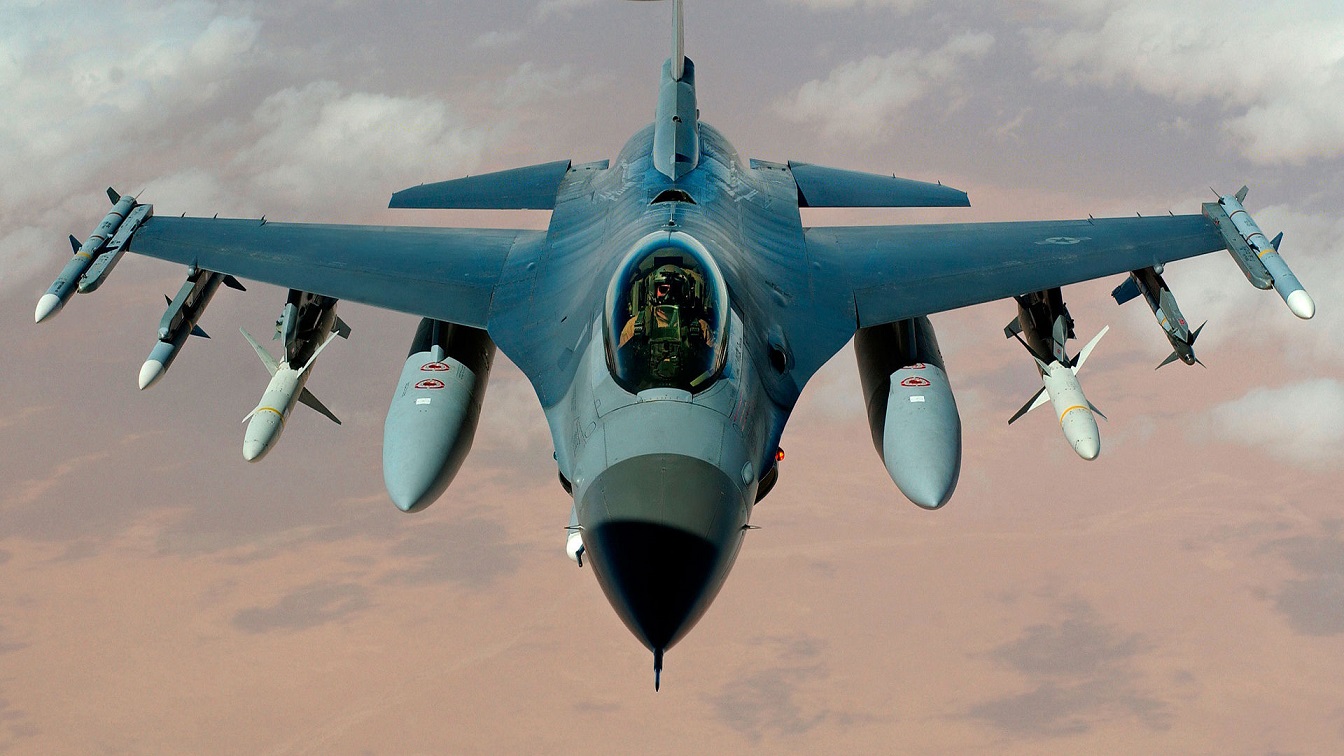Over the course of Russia’s invasion of Ukraine, the United States has provided Kyiv with billions of dollars worth of military equipment. The composition of this aid includes a range of systems such as the High Mobility Artillery Rocket Systems (HIMARS), anti-armor weapons such as the Javelin missile, specialized drones, and now, AGM-88 HARM anti-radiation missiles.
What is the AGM-88 HARM?
As an anti-radiation missile, the AGM-88 HARM is designed to home in on radiation emitted by radar systems or radar-guided air defense systems to destroy them. According to the U.S. Air Force, the AGM-88 missile possesses a range of up to 30 miles and relies on a fixed antenna and seeker head to home in on targets. The acronym HARM in the missile’s full name stands for “High-speed Anti-Radiation Missile.”
What do we Know about AGM-88s in Ukraine?
In early August, images which appeared to depict fragments resembling those of an anti-radiation missile that had reportedly been fired at a Russian position began to circulate on social media. Additional images began to emerge soon after increasingly began to point outside observers to the conclusion that AGM-88s had been employed against Russian equipment in Ukraine. In particular, tail and body fragments of the missiles in question appeared to match those of known photos of AGM-88 HARM missiles. U.S. Under Secretary of Defense for Policy Colin Kahl’s August 8 announcement that confirmed that the United States had indeed sent anti-radiation missiles to Ukraine further fueled hypotheses that the United States had provided the AGM-88 HARM to Kyiv. While Kahl did not specify the exact missile provided by the United States in that briefing, he did note that it was provided to Ukraine by the Defense Department as part of recent presidential drawdown authority packages.
Despite being tight-lipped at first, the Defense Department would ultimately confirm that Ukraine had received AGM-88 HARM missiles in an August 19 briefing. In addition to confirming that Ukraine had received American HARM missiles, the Pentagon also noted that the missile had been paired with Ukrainian MiG aircraft. In particular, the official was referring to the MiG-29 fighter, which is the only Mikoyan-Gurevich aircraft in Ukrainian service today. Ukraine’s use of MiG-29s to launch AGM-88 HARM missiles is the first recorded use of the fighter (or any other Soviet-made aircraft) to fire the American anti-radiation missile. The exact mechanisms which enable this unique pairing remain unknown for now.
What Does this Mean for Ukraine? Expert Analysis
With AGM-88 HARMS in its possession, Ukraine’s ability to attack and destroy Russian radars and air defense systems is greatly improved so long as Ukraine’s fleet of MiG-29s remains operational. Counteroffensives that Ukraine’s military and political leadership want to launch to recover territory currently occupied by Russia will likely require some form of fixed-wing and helicopter air support. For Ukrainian air support to effectively complement any future advances, Russia’s frontline air defenses would need to be disrupted. Targeting Russian air defense systems and radars would also help facilitate strikes on ammo dumps and command centers in Russia’s rear.
While Ukraine has undoubtedly been highly capable at maintaining the strength of its air force despite an overwhelming disadvantage in numbers, the future usefulness of the AGM-88 HARM will depend on the viability of Ukraine’s fleet of MiG-29s.
Wesley Culp is a Research Fellow at the Center for the Study of the Presidency and Congress. He regularly writes on Russian and Eurasian leadership and national security topics and has been published in The Hill as well as in the Diplomatic Courier. He can be found on Twitter @WesleyJCulp.

